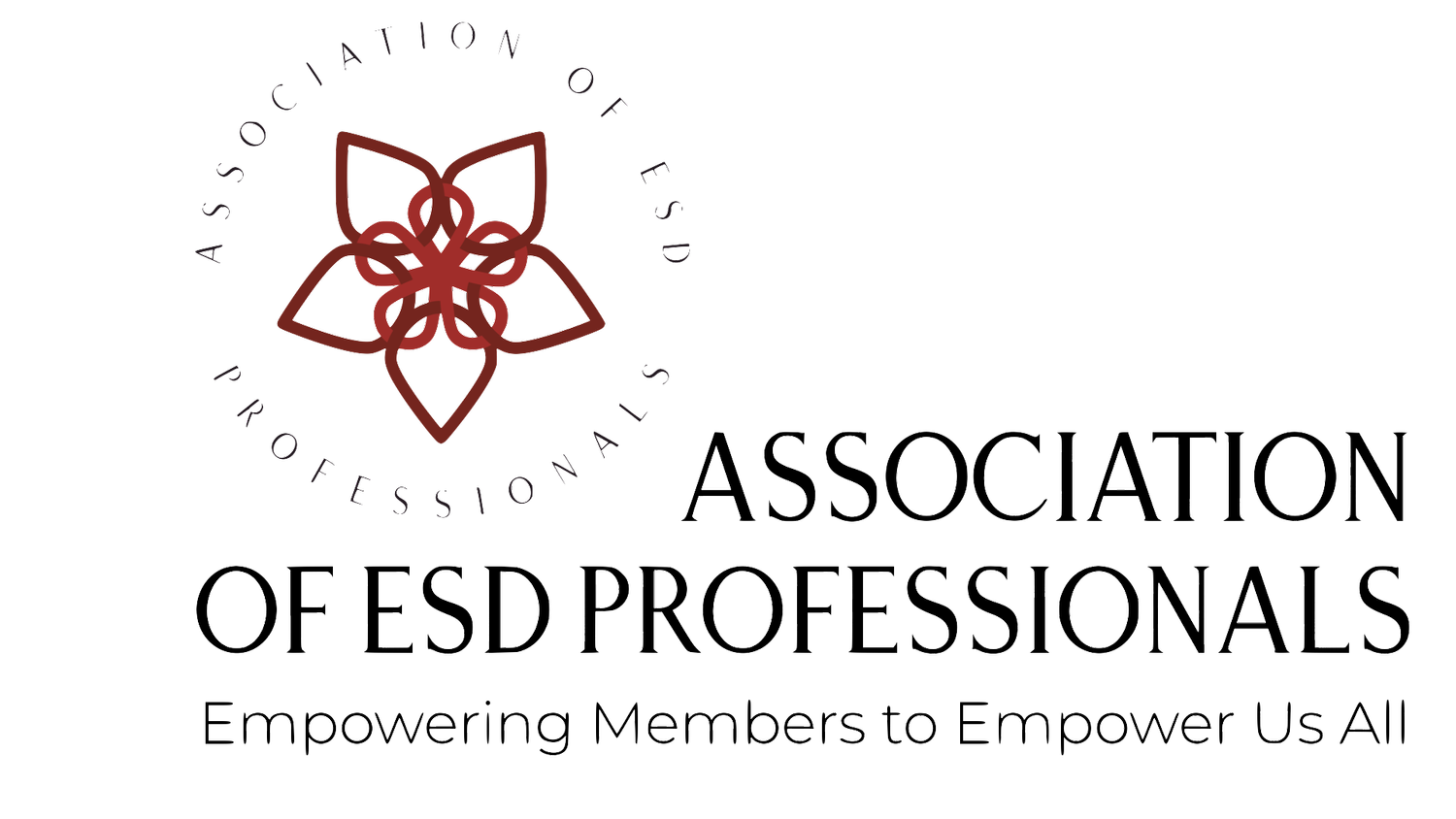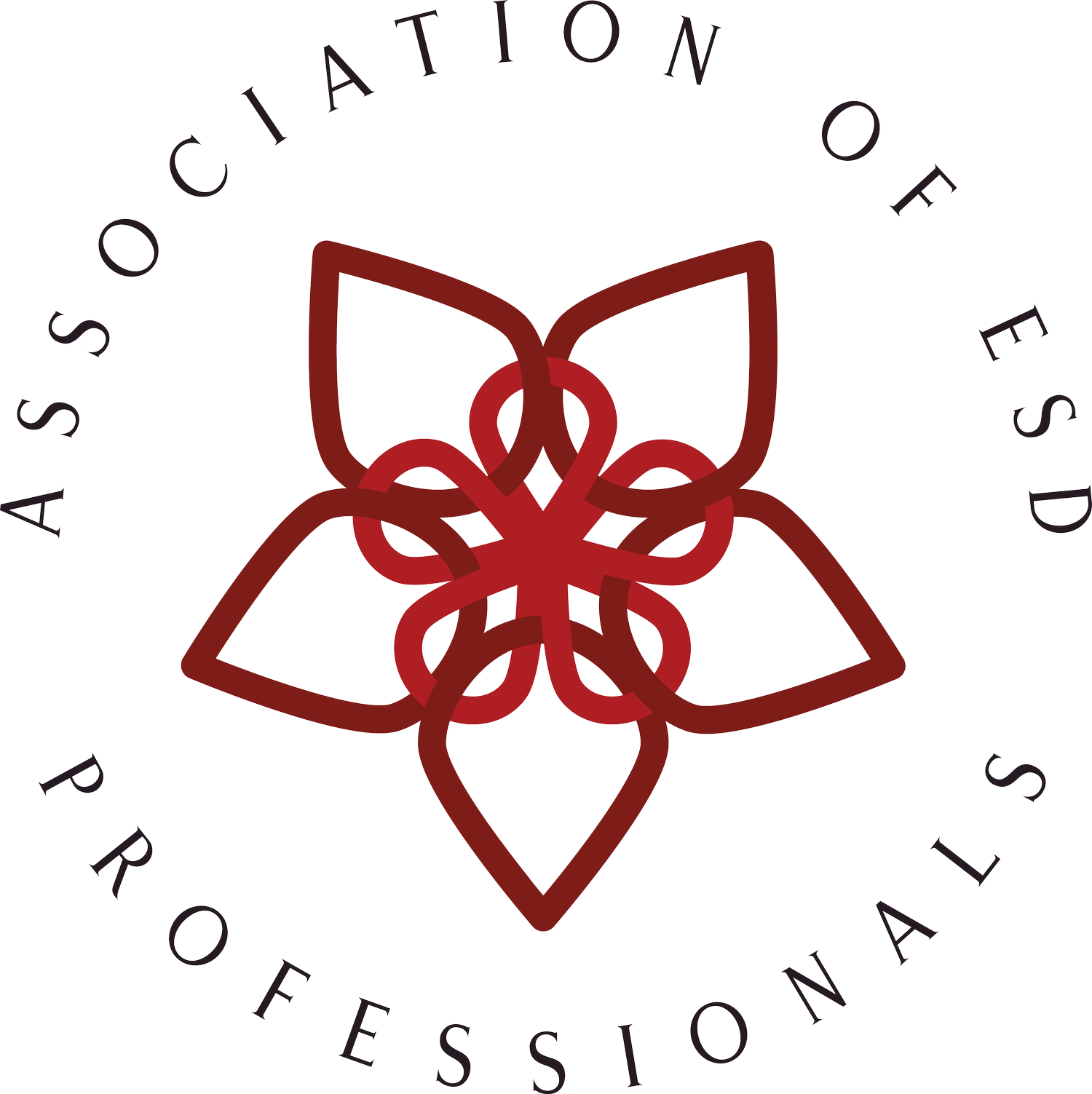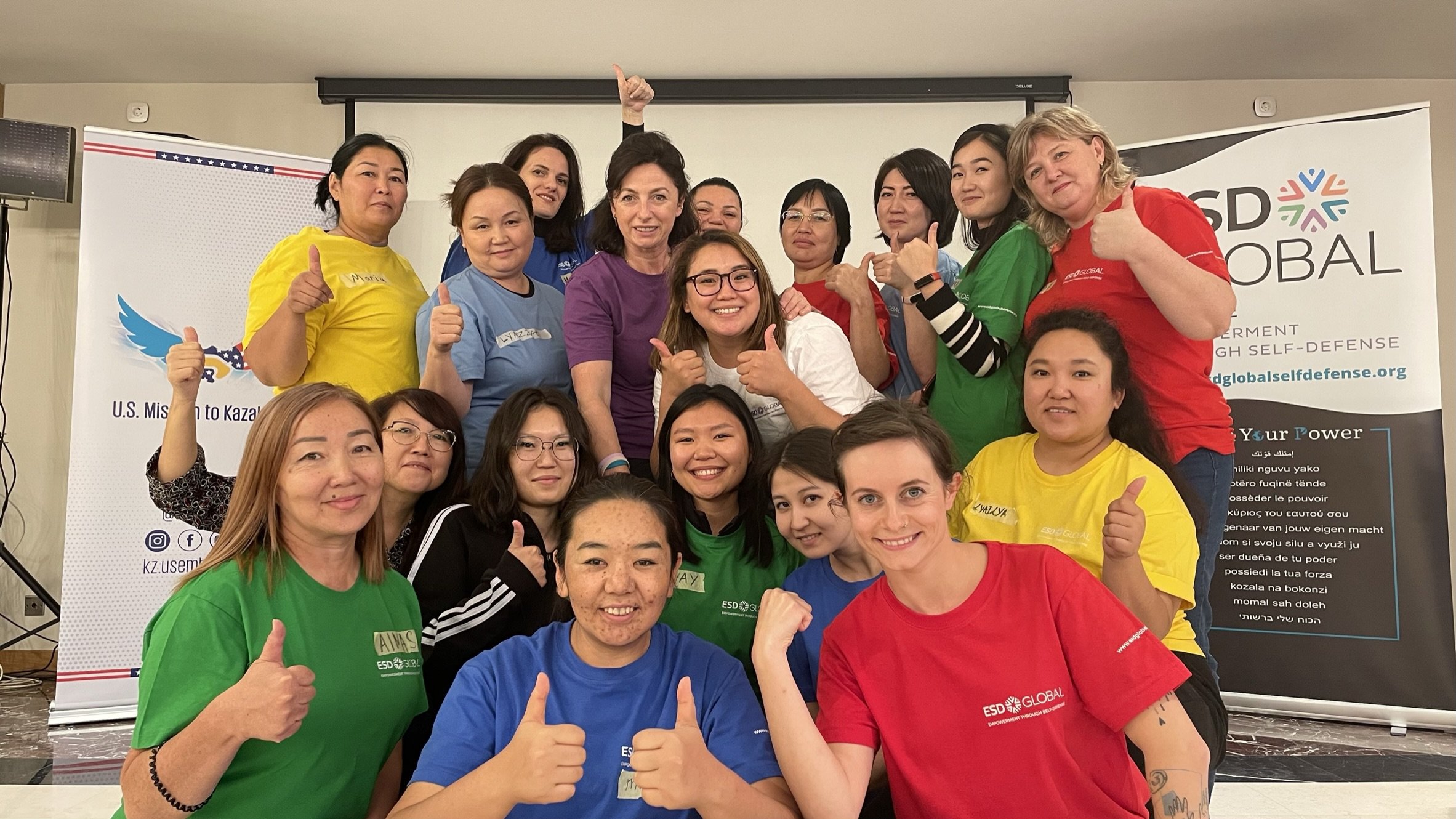Empowered Living in Kazakhstan
The Development of ESD in Central Asia
Our development of Empowerment Self-Defense (ESD) in Central Asia began with a program funded by the U.S. Mission in Kazakhstan and implemented by ESD Global and Consortium of Gender Scholars: “Tools for Empowered Living in Kazakhstan to promote gender equality and women's empowerment to combat gender-based violence.”
When I was invited to take on the project that would teach people in Kazakhstan how to defend themselves both physically and emotionally, I felt deep in my heart the satisfaction of finally finding the answer to one of the biggest questions I’ve faced while working with women and youth across Kazakhstan and Central Asia. When I just started working for the UN Women office in Central Asia 10 years ago, my question was,
How do we empower women and girls in such conservative communities while bride abduction, a direct violation of this goal, is still being practiced all across Central Asia with devastating consequences?
I’ve always searched for the core reasons behind the social and economic issues facing women and youth. Do a person’s financial conditions affect women’s and youth’s sense of security? Or does feeling safe help them to pursue material well-being?
Growing up in a conservative community, I couldn’t always recognize what safety was—even for myself and those close to me. Was it acceptable that my friend’s older brother commented that we looked like “sluts” wearing shorts to go play basketball, because he was concerned that we might attract extra attention? Was it okay that, after getting married, my cousin would rush back home because she didn’t want to upset her mother-in-law by staying out too long? Is it reasonable that my cousin’s husband asked me to convince my cousin not to work, because he doesn’t want a strange woman taking care of their children?
GBV & UN Women
Only when I started working on Gender-Based Violence (GBV) at UN Women did I learn about different forms of violence and abuse that can really look like solicitousness or care, and which are hard to recognize. Meeting people in different communities around Central Asia and talking to them about their experiences, I realized that psychological and financial violence is being practiced on a regular basis, without either parties fully realizing the depth of the issue.
The governments and NGOs do make efforts to prevent and address the most common forms of violence and abuse, which are prevalent in many Central Asian and Kazakhstani communities. These include domestic violence, sexual abuse, and bride abduction. Women and children are most vulnerable to violence both within their households and in their broader communities.
Domestic violence is a significant problem in Central Asia, and statistics on the topic are often difficult to gather due to underreporting and lack of reliable data. Very often, the statistics likely underestimate the true prevalence of domestic violence in the region. There are cultural and social factors that prevent violence survivors from reporting incidents, and some forms of violence may also be considered socially acceptable in certain contexts.
ESD: From Prague to Kazakhstan
In May 2022, I participated in an ESDG (ESD Global) Level 1 instructor training in Prague, where for the first time in my life I got to yell at the top of my lungs and actually kick with my legs and strike with my hands. I’ve always considered myself expressive vocally and bodily; however, during those six days I realized that I had been curtailing myself according to what’s considered to be appropriate in our society.
When we were practicing the “yell” principle, I remembered how my American friend and I were on a bus in Almaty and one of the passengers asked me to ask my friend to speak more quietly, when she was just speaking in her regular tone of voice. I often catch people turning around and looking at me in cafes when I’m telling my friends a story or talking on the phone, because my voice is considered to be too loud in the community where I live. That’s probably why I felt such joy at being able to let out all that I withheld emotionally and physically.
The most exciting thing was to think that in just few months I would be able to share all of those amazing techniques with more women in my home country!
When selecting the group of participants for the first ESDG Level 1 instructor training in Central Asia, held in Astana in September 2022, we tried to include representatives of every sector that works with women, youth, and children facing violence. Our group was comprised of fifteen women from 10 cities across Kazakhstan—lawyers solving cases of sexual and domestic violence against women and children, human rights activists, NGO representatives providing shelter and support to women surviving domestic violence, government workers, and psychologists and safety trainers who work with children and youth on a daily basis. Every single woman selected had a passion for creating safety in their communities.
Growth in Central Asia
As these women were already working in the field of violence prevention in one way or another, our idea was to help them to enhance their skills and contribute additional knowledge that they could apply in their current work. So far, over 60 trainings have been conducted for around 3,000 students, women, children, and youth. While conducting trainings, some of the instructors have been approached by the law enforcement bodies requesting that they provide legal justification for conducting such trainings. This recalls the question I began with, How do we empower women and girls in such conservative communities?
In order to ensure that trainings are conducted according to the legal requirements of Kazakhstan, and to qualify for grant programs that would allow us to further develop ESD in communities throughout Central Asia, it was decided to found a Public Fund. PF “ESD Central Asia” was registered on January 5, 2023.
Since completing our “Tools for Empowered Living” project with the US Embassy on March 30, 2023, I have been preparing a report on the work done in the past year, and I can confidently say that our first steps to develop ESD in Central Asia were successful. The outcome exceeded our expectations thanks to the dedication and passion of every single person involved.
Author: Dinara Zhaxynbek
Editor: Toby Israel
Photo: Courtesy of Author
About Dinara
Dinara Zhaxynbek has over 10 years’ experience working in Social and Economic Development with a focus on Women and Youth. Dinara joined ESD Global in April 2022 as a Local Coordinator for Kazakhstan. In May 2022, she attended the ESDG Level 1 Training in Prague. Dinara is currently Director of Public Fund ESD Central Asia and trains alongside other ESD Instructors based in Almaty.
Stay connected with Dinara on Instagram, and follow the growth of ESD Central Asia here.
Would you like to share about your ESD work, or do you think a certain ESD organization should be featured? Reach out at toby@esdprofessionals.org about contributing to the Association of ESD Professionals blog!


